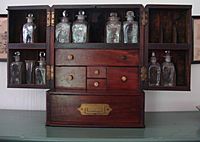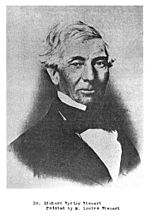Richard Sprigg Steuart facts for kids
Quick facts for kids
Richard Sprigg Steuart
|
|
|---|---|
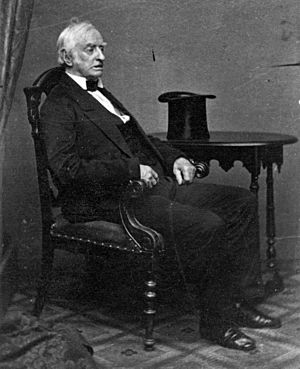
Photograph of Richard Sprigg Steuart
|
|
| Born | November 1797 |
| Died | July 14, 1876 Dodon, Anne Arundel County, Maryland
|
| Education | St Mary's College, Baltimore |
| Known for | Spring Grove Hospital Center |
| Spouse(s) |
Maria Louisade Bernabeu
(m. 1824) |
| Relatives | George H. Steuart (politician), grandfather George H. Steuart (militia general) brother George H. Steuart (brigadier general) nephew. |
| Medical career | |
| Profession | Physician, Planter |
| Field | General medicine |
| Institutions | Spring Grove Hospital Center |
| Sub-specialties | Mental Illness |
Richard Sprigg Steuart (1797–1876) was a doctor from Maryland. He was a very important person in the early treatment of mental illness. In 1838, he received four large farms, about 1900 acres in total. He also inherited about 150 enslaved people.
Steuart played a huge role in making The Maryland Hospital for the Insane bigger and more modern. Today, this hospital is called the Spring Grove Hospital Center. Steuart thought expanding the hospital was his life's most important work. The Maryland government approved the expansion in the 1850s. It was finished after the American Civil War ended.
When the Civil War began, Steuart lost his job as the hospital's leader. This happened because he would not promise loyalty to the Union. Even though Maryland allowed slavery, it did not join the Southern states. Union soldiers came into Maryland to make sure it stayed with the Union. Steuart supported the Southern side. He had to hide for much of the war. He also secretly sent medical supplies to the South.
After the war, Steuart got his job back at the hospital. He saw the new hospital building open in 1872. He continued to lead the hospital almost until he died in 1876. Spring Grove still helps people with mental illness today. It is the second oldest hospital of its kind in the United States.
Contents
Early Life and War Service
Steuart was born in Baltimore, Maryland in November 1797. He was a younger son of Dr. James Steuart and his wife Rebecca. He was the fourth of eight children. Two of his siblings died very young from scarlet fever. Steuart grew up at his family's home, Maryland Square. He went to school at St Mary's College, Baltimore.
War of 1812 Experience
During the War of 1812, Steuart was seventeen years old. He volunteered to help his older brother, Captain George H. Steuart. His brother led a group of soldiers called the Washington Blues. Steuart served in the Battle of North Point on September 12, 1814. In this battle, the Maryland Militia held off a British attack. This gave Baltimore enough time to strengthen its defenses.
Steuart later wrote about his experience: "I found my little knowledge of surgery very useful. One of the soldiers had been shot through the thigh...I made a tourniquet, stopping the blood. I put him in my wagon and took him to the Maryland hospital. There, surgeon Gibson helped him and later removed his leg."
Medical Career and Mental Health Care
After the war, Steuart first started studying law. He studied with Brigadier General William H. Winder. But Steuart soon decided to study medicine instead. He studied under Dr. William Donaldson in 1818. He graduated with his medical degree in 1822. That same year, he published a paper about how arteries work. After graduating, he worked with Donaldson in Baltimore for 17 years. When Donaldson died, Steuart took over the medical practice.
Early in his career, Steuart began to focus on mental illness. This was a field that many people did not pay much attention to. In 1834, he became the President of the Board of Visitors for the Maryland Hospital for the Insane.
In 1843, Steuart became a professor at the University of Maryland. He taught about the theory and practice of medicine. He also served as president of the Medical and Chirurgical faculty of the State of Maryland twice. By 1853, a medical journal called him "one of the most eminent physicians" in Baltimore.
Improving the Maryland Hospital for the Insane


Steuart's most important work was for the Maryland Hospital for the Insane. This hospital was founded in 1797. He became the President of the Board and the Medical Superintendent. Running this hospital became his life's goal. By the mid-1800s, the hospital was too small. Steuart worked hard to get money and permission from the Maryland General Assembly. He wanted to build a new, larger hospital at Spring Grove. He worked with Dorothea Dix, a social reformer. In 1852, Dix gave a powerful speech to the Maryland government. Steuart led the committee that chose the hospital's current location in Catonsville, Maryland.
Buying the land for the hospital cost $14,000. Steuart himself gave $1,000, which was a very large amount of money back then. The land was bought in 1853. However, building the new hospital was delayed by the Civil War. The hospital was finally finished in 1872. One person at the time called it "one of the largest and best" hospitals for mental illness in the United States.
Steuart's brother, Major General George H. Steuart, had two sons who suffered from mental illness. This might have been one reason why Steuart was so interested in treating mental illness and in Spring Grove Hospital.
Tobacco Farming and Views on Slavery
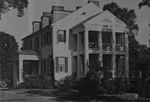
In 1842, Steuart inherited a large tobacco farm called Dodon. It was about 1600 acres and located near the South River in Anne Arundel County. He also inherited about 150 enslaved people. Steuart's grandfather, George H. Steuart, had bought and developed Dodon around 1740.
This inheritance made Steuart a very rich landowner. He owned many enslaved people in Maryland. Because of this, Steuart stopped his medical practice. He said he had spent "23 years of hard professional life." He wanted to focus on managing his new farm.
Slavery and Colonization
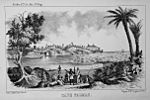
Like many slaveholders in the South, Steuart had mixed feelings about slavery. He knew that slavery could not last forever. However, he did not like the efforts of people who wanted to end slavery right away.
From 1828, Steuart was on the Board of Managers for the Maryland State Colonization Society. This group wanted to help free Black Americans move to Africa. They helped create a colony in Africa called Liberia. Steuart's father and brother were also involved in this group.
In 1845, Steuart wrote a public letter. He asked if anyone in Maryland who was involved with slavery did not think it was a "curse" on their land. He said he had never met such a person. He felt sad that Maryland was not as wealthy or growing as fast as states like Pennsylvania and Ohio. He believed slavery held back Maryland's economy.
Steuart thought that white workers would not settle in places where enslaved people worked. He felt that white people saw labor as something only for enslaved people.
Even though he might have disagreed with slavery in general, Steuart strongly opposed those who wanted to end it quickly. Instead, he suggested that slaveholders should free their enslaved people on their own. He also believed that free Black people should move to Africa. He thought this would help remove most Black people from Maryland.
Despite laws trying to limit the freeing of enslaved people, by 1860, almost half of the Black population in Maryland was free.
Civil War and Its Impact
When the Civil War started in 1861, Steuart and his family supported the Southern side. Maryland did not leave the Union. But people in Maryland were divided between supporting the North and the South. The North's side won out. In April, there was a riot in Baltimore. Union soldiers traveling through the city were attacked. Steuart wrote about seeing this event. He felt that most people in Baltimore wanted to fight off the Union troops.
Steuart was among those who tried to convince Governor Hicks to let the state government vote on leaving the Union. He and others followed Governor Hicks to Annapolis. They believed the state government, not the governor, should decide Maryland's future. On April 29, the Maryland government voted against leaving the Union. Union soldiers quickly took control of the state to prevent any changes.
Hiding During the War
The situation remained uncertain until May 13, 1861. Union troops took over Maryland, stopping any vote for the South. By late summer, Union soldiers firmly controlled the state. People who supported the South were arrested. Steuart's brother, Major General Steuart, fled to Charlottesville, Virginia. Much of his family's property was taken by the U.S. government. Their home in Baltimore, Maryland Square, was used by the Union Army as a hospital.
Dodon, Steuart's farm, was not taken by the Union. But during the war, horses were raised and secretly sent South for the Confederate army. Medical supplies, like quinine, were also smuggled. Because of this, Union troops often raided Dodon. Steuart often had to hide. A family story says that Steuart's wife would quietly let Union soldiers in. Then she would sneak out to warn her husband not to come home.
Steuart's support for the Confederacy cost him a lot. He lost his job at the hospital because he refused to promise loyalty to the Union. A person named W. W. Glenn described Steuart as hiding from the authorities. He said Steuart had been hiding for over six months. Steuart moved from place to place, sometimes staying in the city. He never showed himself during the day.
After the War Ends
After the war, in 1868, Steuart was given his job back as superintendent of the hospital. He remained in charge when the hospital moved to the new building at Spring Grove in 1872. He lived to see his life's work completed. However, he was removed again in 1875. This happened because the hospital board, under his leadership, borrowed money from private investors. This was done after the Maryland government did not fully fund the hospital.
Steuart gave a speech in 1876 to the Alumni Association of Maryland Medical University. He died that same year on July 13. He is buried at his family farm, Dodon, in Maryland.
Family Life
On January 25, 1824, Steuart married Maria Louisa Bernabeu (1800–1883). They had nine children. Six of them lived to be adults:
- Dr. James Aloysius Steuart (1828–1903). He became a successful doctor. He became the Health Commissioner of Baltimore around 1876. His daughter, Maria Louisa Steuart (1852–1938), painted her grandfather's portrait.
- John Baptiste de Bernabeu Steuart (1831–1877)
- William Donaldson Steuart (1834–1931)
- Emily Steuart (around 1835-1905)
- Richard Sprigg Steuart Jr. (1836–1920)
- Isabella Clara Steuart (1841–1921)
Legacy
Steuart's building at Spring Grove was the main hospital building for almost 100 years. It was torn down in 1963 and replaced with newer buildings. Spring Grove still treats mental illness today. It is the second oldest hospital of its kind in the United States. However, because Steuart strongly supported the Confederate "Lost Cause", no building at Spring Grove Hospital Center is named after him.


